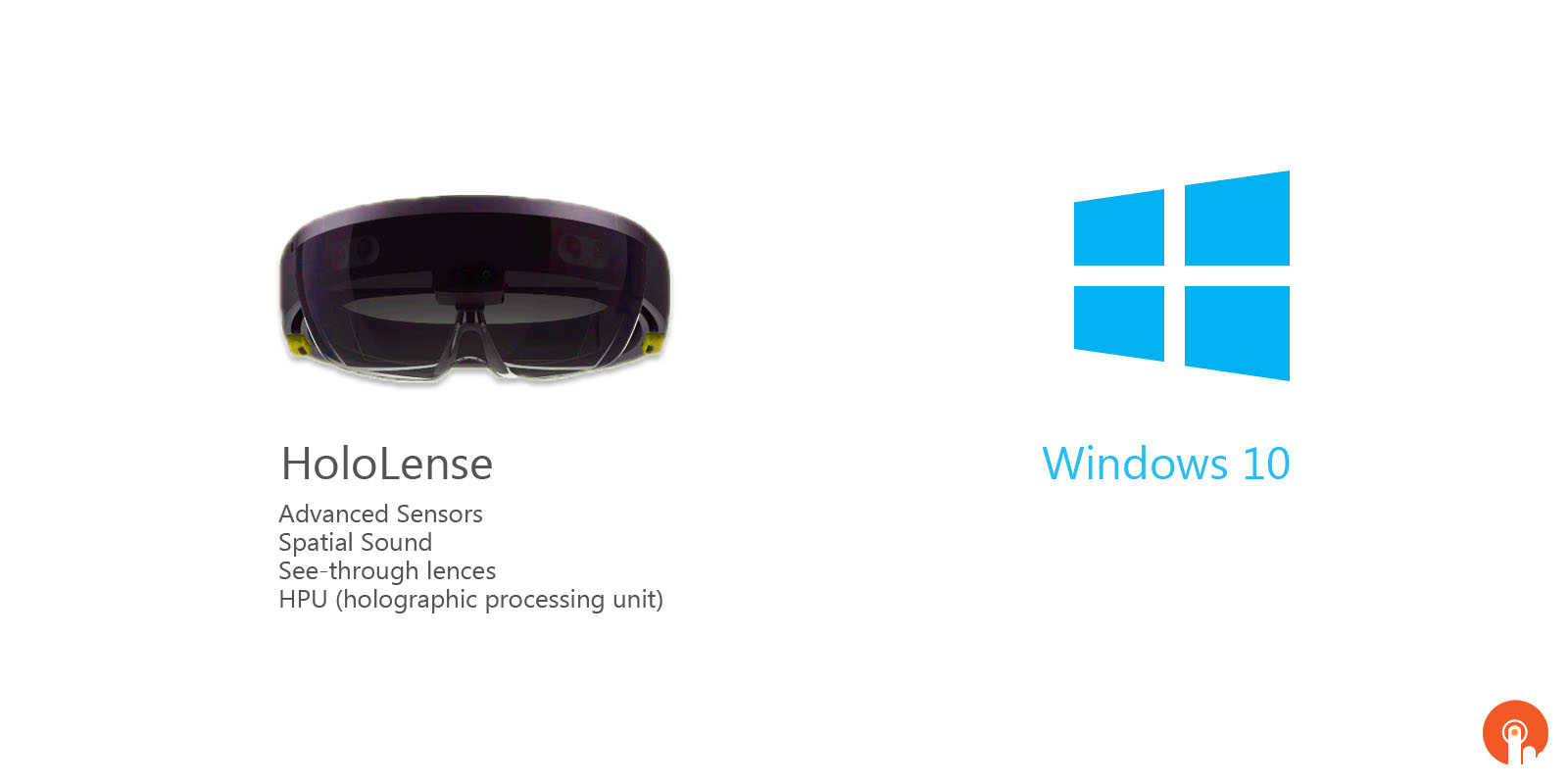
Microsoft unveils ‘HoloLens’ computing headset
Today at its Windows 10 event, Microsoft riffed about holograms for a lengthy period. It then announced that it had build a holographic headset that appears to fuse the real world with the digital realm.The headset is called the HoloLens. The headset is wireless, and does not need to pair with either a computer or a phone. The product, of course, is comparable to Google’s Glass project.Like Glass, the hardware is transparent, providing a live view of the real world.
Microsoft’s effort seems to combine the best of Glass (real image) with the best of Sulon (advanced digital 3D graphics) for a more convincing holographic experience.The HoloLens promises interactive virtual presence as its primary selling point, with big potential advantages for research, remote collaboration, engineering and design work.Microsoft has revealed that Windows 10 will bring its voice-controlled assistant Cortana to PCs.It also unveiled a headset that it said would one day project the operating system over views of the real world.The offer, which is limited to the Windows 10’s first year of release, may aid its adoption.
The company said that the final version of the machine would not need to be linked to other devices to work, and should be released within Windows 10’s “timeframe”.It revealed Nasa was already working with the kit, and said the US space agency hoped to start controlling its Mars rovers with a prototype version as soon as July.Windows 10 brings the same operating system to devices of all sizes, rather than having different ones for PCs/tablets, mobile phones and the firm’s Xbox games console.
Other demos involving the machine included the wearer:
Playing Minecraft with the video game’s graphics appearing over living room furniture.
Seeing a Skype video appear as if it was taking place on a building wall.
Creating a model of a drone, which she saw in front of her face while shaping it by moving her hands and giving voice commands.
Joe Belfiore Executive Of Microsoft demonstrated how the software could be told to:
Bring up Powerpoint presentation documents.
Locate photos taken during a specific month.
Dictate and send emails .
Tell the user whether or not the weather forecast indicates they should wear a coat later.
Show where their car is parked.
This was one of four demonstrations that Microsoft offered, and the most compelling of the bunch. The second demo was a trippy Skype call, in which the person I was calling talked me through a household fix. The person on the line, an “electrician,” could see what I was seeing through the lens, and offered guidance as I connected a light switch.
Microsoft also offered a demonstration of a gaming application, a Minecraft-like experience in which a projection of a castle appeared on a wooden coffee table. And last, there was HoloStudio, which showed how holograms could be used to construct an object that remains static as you move around it. For example, someone could construct a toy car out of thin air while others wearing the lens sit around and watch the action or collaborate on prototyping.
Microsoft is not talking about when this new product will ship and how much it will cost. And it’s unclear whether developers will embrace it and create compelling experiences that will lure consumers. These factors will determine the HoloLens’ commercial success.

